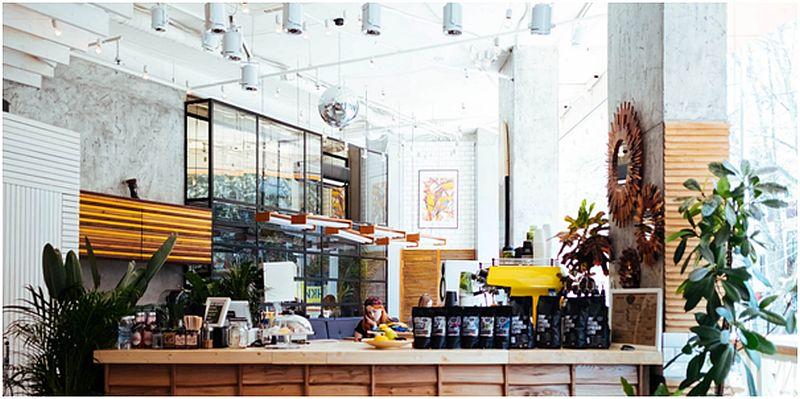Most of us have heard the term “going green” and rightly so, as it becomes more important as we move into the future. From recycling more to reducing our carbon footprint, we can take little steps and make significant differences.
Have you ever stopped to consider the impact your dining choices have on the environment? Now, we’re not asking you to swear off burgers and fries forever (let’s be real, we all deserve a cheat day every now and then), but it’s important to think about the bigger picture. Eco-friendly dining isn’t just a trend—it’s a necessity.
By choosing restaurants that prioritize sustainability and sourcing local ingredients, you’re doing your part to reduce your carbon footprint. And who knows, you might even stumble upon your new favorite spot in the process. Allegra, a rooftop restaurant in London’s CEO says, ‘as restaurant owners we have a responsibility to be more sustainable, but consumers should also be conscious of where they choose to dine. It’s important’.
Plus, there’s something extra satisfying about stuffing your face with food that’s not only delicious but also good for the planet. Committing to eco-friendly dining doesn’t mean sacrificing flavor or fun. So let’s cheers to a delicious and sustainable future, one mouth-watering bite at a time!
One major area that can help in reducing our environmental impact is the restaurant industry. We love eating out, but unfortunately, the restaurant industry significantly increases carbon footprints with unsustainable practices. At a time when the earth is experiencing environmental strain, it is important to start implementing sustainable practices in restaurants. So let’s discuss why eco-friendly dining matters.
1. Cutting Down Food Waste

Food waste is one of the most significant contributors to environmental issues as it increases the carbon footprint of the restaurant. Fortunately, many restaurants have started practicing food management practices like donating waste food to shelters, composting food waste, and utilizing it as animal feed.
Ekte, a Nordic restaurant in London, for example, uses software and smart systems to measure optimum stock levels to avoid food waste. This means they are notified when stock levels are low rather than relying on a human where there could be human error.
2. Opting Sustainable Ingredients
If you are still wondering how you can make a difference in eco-friendly dining, you can start by choosing restaurants that use locally sourced and sustainable foods. When restaurants choose sustainable ingredients, it helps to reduce the carbon footprint by reducing the energy used to transport goods. Additionally, it helps to promote local farms, leading to better support for their communities.
3. Reducing Plastic Usage
When plastic products are not disposed off thoughtfully, they can cause harm to our oceans and other natural environments. In the restaurant industry, single-use plastic waste is a significant environmental factor. However, Restaurants have increased the use of eco-friendly alternatives such as compostable straws, cups, and containers, helping to reduce the carbon footprint and creating a cleaner environment for people and animals alike.
Bakehouse 46, a restaurant and bakery in Michigan, have completely overhauled their plastic usage and how they box their takeaways and collections. They sell a lot of cupcakes but they now come in sustainable packaging. It’s important for the business to be seen to be sustainable but also it’s important the consumer is being as sustainable as possible when they buy something like cupcakes or a takeaway.
4. Restaurant gardens
Restaurants are now turning to their own gardens, revolutionizing the dining experience. These urban oases not only promise fresher, tastier dishes but also align with our growing desire for sustainable living. The appeal is clear: Restaurants nurturing their ingredients right at their doorstep. Imagine cozy city eateries with lush gardens on their rooftops or in their backyards, where chefs pluck herbs, fruits, and veggies for each dish they prepare—a culinary adventure.
This shift is more than just about great food; it’s a commitment to the environment. By growing their own ingredients, restaurants reduce their carbon footprint. They cut down on the need to source ingredients from distant places, curbing emissions along the way. The benefits ripple beyond, connecting these establishments with local farmers and communities, creating a more sustainable ecosystem.
The restaurant industry, a hub of creativity, has also had a substantial environmental impact. Energy-intensive kitchens and far-flung ingredient sourcing have contributed to this. Hence, it’s crucial to introduce sustainable practices into this sector. When you choose to dine at such eco-friendly establishments, you’re not only savoring a delicious meal but also supporting a network of local farmers and artisans dedicated to making a difference.
Every visit to a garden-to-table restaurant is a small step toward a more sustainable future. Imagine if more restaurants joined this movement—our planet would undoubtedly benefit. So, let’s make a conscious effort to seek out these eco-conscious dining spots, transforming our dining experience into a celebration of both taste and our planet’s health. Together, we can shape a greener, healthier future for our environment.
Article Submitted By Community Writer




